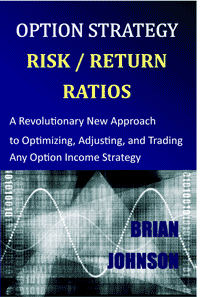Categories
Archives
AI Volatility Edge E-Subscription
OIS Universal Filter E-Subscription
Brian Johnson’s Books
Trader Edge Affiliates
Recent Posts
Recent Comments
- Brian Johnson on Trading Option Volatility Featured in Stocks & Commodities Magazine
- John C on Recession Model Forecast: 10-1-2022
- Recession Model Forecast: 10-1-2022 | Trader Edge on New AI Volatility Edge Platform
- Steve Ginn on Trading Option Volatility Featured in Stocks & Commodities Magazine
- John C on Recession Model Forecast: 03-01-2022
Author’s LinkedIn Profile
Affiliates
Resources
Blogroll
- Abnormal Returns
- Algo Dude
- Chart Swing Trader
- CSS Analytics
- Don't Fear The Bear
- DShort.Com
- Dynamic Hedge
- FactorWave
- Intelligent Trading
- MarketSci Blog
- My Simple Quant
- Nightly Patterns
- NovelInvestor.com
- NYC Trader
- Only VIX
- Option Pit
- Quantifiable Edges
- Quantivity
- Quantocracy
- QUSMA
- Six Figure Investing
- System Trader Success
- The Capital Spectator
- The Relativity Report
- Traders Blog
- Trading the Odds
- Tyler's Trading
- Vix and More
- Volatility Futures & Options
- World Beta
- Zen Trader
Meta
Disclosure
Trading Insights, LLC receives compensation for purchased made through affiliates above.Limitation of Liability
Under no circumstances, including but not limited to negligence, shall Brian Johnson and/or Trading Insights, LLC be liable to you for direct , indirect, incidental, consequential, special, punitive or exemplary damages. Please read the Disclaimer & Terms page in its entirety.
Tag Archives: recession modeling
Recession Model Forecast: 03-01-2022
In the past, I published the Trader Edge Recession Model every month. After finalizing and rolling out the 32-bit and 64-bit versions of a new comprehensive option volatility forecasting platform called AI Volatility Edge (AIVE) and publishing my latest book … Continue reading
Posted in Economic Indicators, Equity Market Snapshot, Fundamental Analysis, In-Depth Article, Market Commentary, Market Timing, Recession Forecasting Model, Risk Management, Strategy Development
Tagged aggregate peak-trough model, aggregate recession model, Brian Johnson, diffusion index, recession forecast, recession modeling, Recession Slack Index, TraderEdge
1 Comment
Temporary Suspension of Recession Model Posts
In conjunction with the development of the AI Volatility Edge Platform, I have been working on a new options book for the past year. It is my most ambitious book to date, with extensive volatility research and modeling. To allow … Continue reading
Posted in AI Volatility Edge, Economic Indicators, Fundamental Analysis, Recession Forecasting Model
Tagged aggregate peak-trough model, aggregate recession model, Brian Johnson, diffusion index, recession forecast, recession modeling, recession models, Recession Slack Index, Trader Edge, TraderEdge
Leave a comment
Recession Model Forecast: 12-01-2020
I made a number of significant improvements to the recession model in January of 2020. If you missed the January recession model post, or if you would like to review the improvements to the models, please revisit the Recession Model … Continue reading
Posted in AI Volatility Edge, Economic Indicators, Fundamental Analysis, In-Depth Article, Market Commentary, Market Timing, Recession Forecasting Model, Risk Management, Strategy Development
Tagged aggregate peak-trough model, aggregate recession model, Brian Johnson, diffusion index, recession forecast, recession modeling, Recession Slack Index, TraderEdge
1 Comment
A New Recession Slack Indicator
I introduced the topic of recession forecasting in late October. I have since developed several recession forecasting tools that I created by applying probit, logit, and neural network models to a diffusion index of economic and market-related variables. This article … Continue reading
Posted in Economic Indicators, Fundamental Analysis, In-Depth Article, Market Commentary, Market Timing, Recession Forecasting Model
Tagged diffusion index, recession forecast 2012, recession forecast models, recession forecasting, recession modeling, Recession Slack Index, trade, trader
31 Comments
U.S. Recession Risk Jumps 20% in November
I introduced the topic of recession forecasting in late October and have since developed several recession forecasting tools that I created by applying probit, logit, and neural network models to a diffusion index of economic and market-related variables. If you … Continue reading
Posted in Economic Indicators, Fundamental Analysis, Market Commentary, Market Timing, Recession Forecasting Model, Strategy Development
Tagged diffusion index, ECRI recession forecast, logit model, neural network models, probit model, recession forecast 2012, recession forecasting, recession modeling, trade, trader
1 Comment
Recession Model Improvements
I introduced the topic of recession forecasting in late October with a discussion of Capital Spectator’s Economic Trend index, which I used as a foundation for two new recession forecasting models. Last week I explained the potential limitations of forecasting … Continue reading
Recession Models and the Fiscal Cliff
Last week I introduced two new probit models to forecast recessions and the period between the market’s peak and trough associated with each recession – as defined by the National Bureau of Economic Research (NBER). In response to that article, … Continue reading













Recession Model Forecast: 10-1-2022
In the past, I published the Trader Edge Recession Models every month. After finalizing and rolling out the 32-bit and 64-bit versions of a new comprehensive option volatility forecasting platform called AI Volatility Edge (AIVE) and publishing my latest book … Continue reading →